We may receive a commission when you use our affiliate links. However, this does not impact our recommendations.
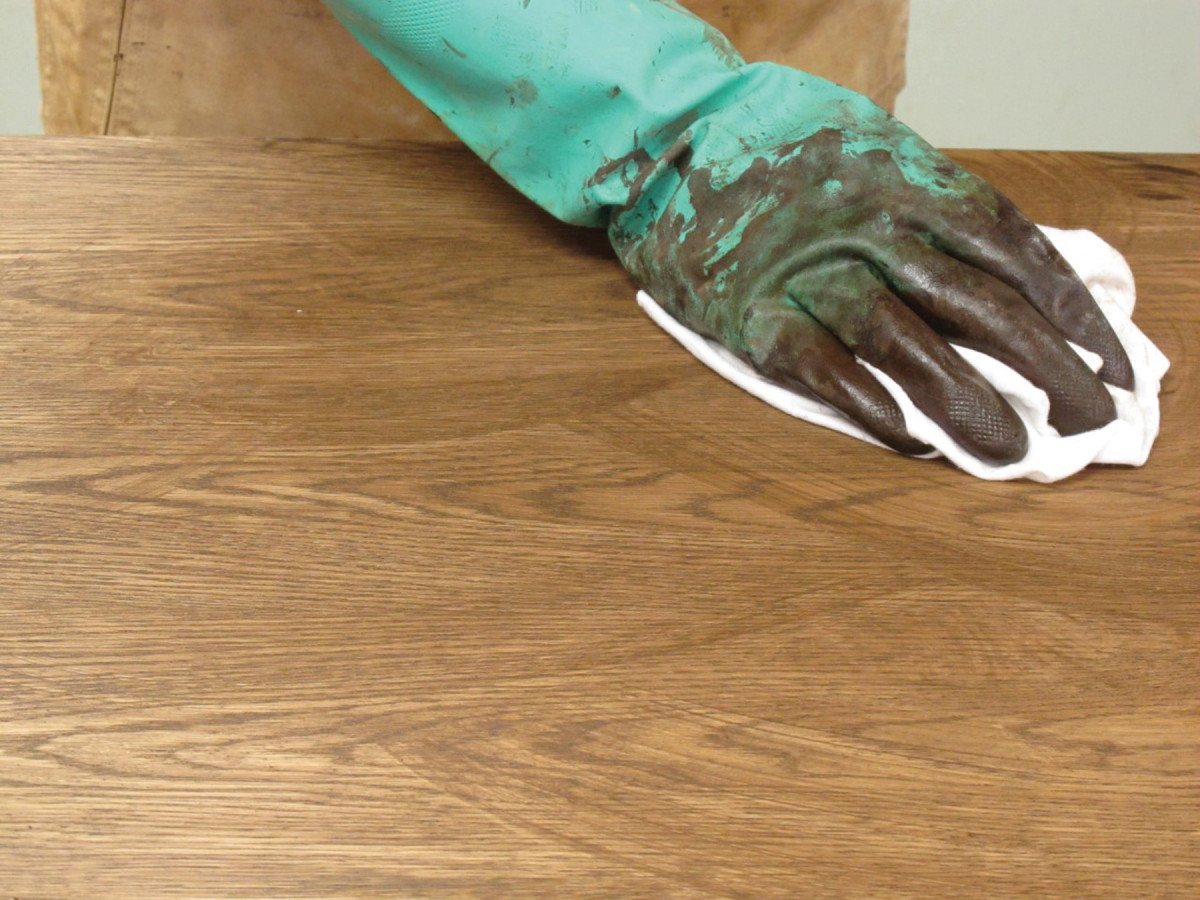
1. Decorative products using water-based technology such as stain, glaze and pore fillers are more difficult to use because they dry so fast. Here the stain dried before I could get all the excess wiped off.
Even in wood finishing.
One of my favorite songs back in the 1960s was Bob Dylan’s, The Times, They are A-Changin’. This theme applies today to what’s happening in wood finishing.
It’s natural for us to believe that the way things ought to be are the way they were in our youth or young adulthood. Change always brings with it the necessity for adjusting. I’ve had to make lots of adjustments in my wood finishing. The main areas are finishes, solvents, spray guns, paint strippers, and adjusting to the widespread consolidation that has been occurring.
Finishes
The biggest change is the introduction of water-based finishes and the slow disappearance of nitrocellulose lacquer and varnish. Actually, just using the term “varnish” is becoming out of date. There aren’t many varnishes left. They have been replaced by “polyurethane,” which is a type of varnish and which was widely disparaged in the woodworking community in its early days as a “plastic,” as in “I don’t allow plastics into my shop.” (Actually, all varnishes and lacquers are plastics.)
Back to water-based finishes. Despite manufacturer labeling trying to make you think they are just like lacquer or varnish, they are an entirely new and different type of finish. The big reason, of course, is the inclusion of lots of water. Water raises wood grain, is more weather sensitive than organic solvent, increases the difficulty of applying decoration (stains, glazes, pore fillers and toners), and causes rust on metal cans.
Industry has converted significantly to water-based finishes in order to comply with VOC regulations, especially local regulations where their factories are located. But these finishes haven’t caught on nearly as much in the amateur and small-shop woodworking community because they are more difficult to use than solvent-based finishes and don’t look as nice on quality woods.
Solvents
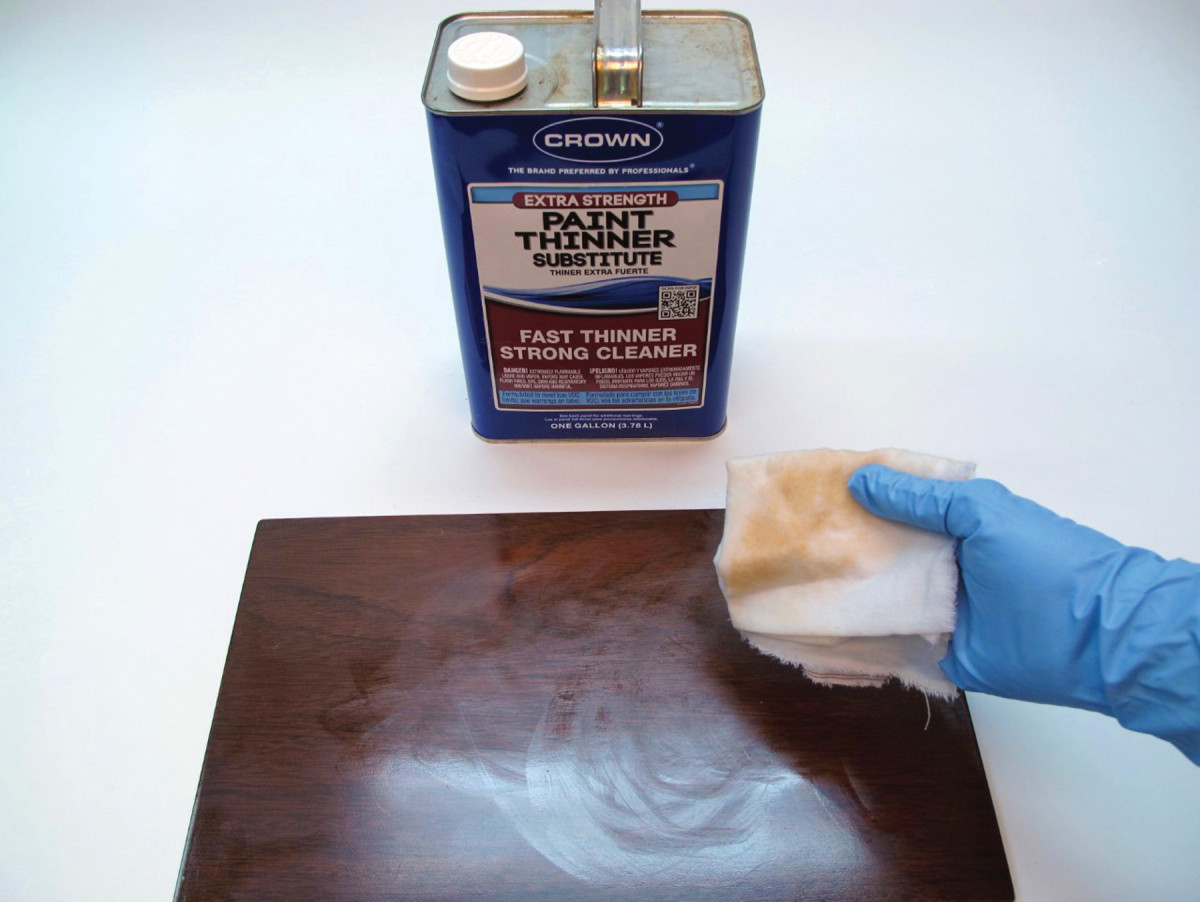
2. In order to make “paint thinner” compliant with strict VOC rules, manufactures add a lot of acetone, which is an “exempt” solvent. The problem is that acetone attacks many common finishes, as it’s doing here on this lacquer finish.
The change in the availability of solvents hasn’t happened everywhere yet, but it’s coming. The driving force behind the change is air pollution, which is contributed to by VOCs. So some areas of the country, especially California and parts of the Northeast and Midwest, are restricting the sale of certain solvents.
The finishing solvents most affected are lacquer thinner and mineral spirits (paint thinner), though denatured alcohol has just joined the list in California. To make these solvents compliant with VOC laws, manufacturers have added a lot of acetone because this solvent is much less polluting than the M.E.K., toluene, xylene and petroleum distillate
traditionally used. Acetone can be used because it’s classified as an “exempt” VOC.
Acetone has two characteristics, however, that you need to be aware of because it changes how lacquer thinner and paint thinner work. First, acetone evaporates very rapidly, so you may not have as much time as you were used to. Second, acetone is a very strong solvent that dissolves or blisters a lot of dried coatings (finishes and paints). So wiping over a coating, for example, to remove wax, with reformulated paint thinner may attack that coating. Read the ingredients on the can to check that acetone isn’t included.
Spray Guns
Spray guns have almost totally changed since the early 1990s in response to the desire to put less finish into the air. Traditional spray guns operate off of air under high pressure, which causes a lot of the coating to bounce back off the target and be exhausted into the atmosphere.
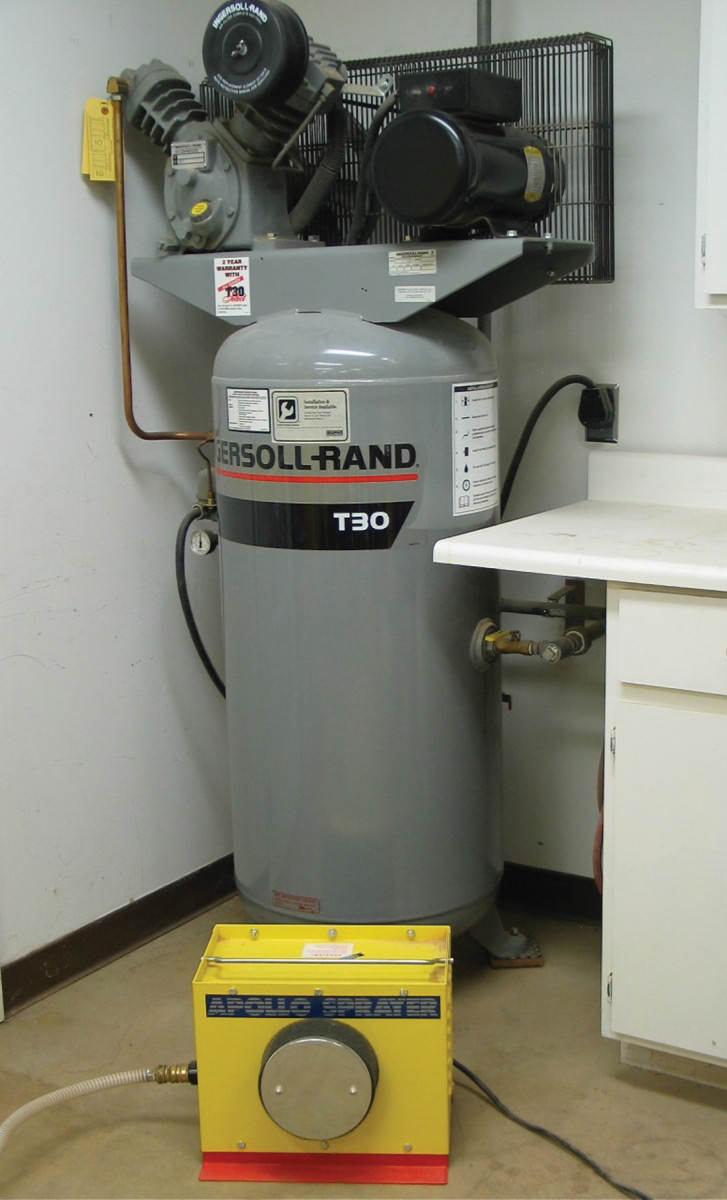
3. There are two sources of air for HVLP spray guns: a compressor and a turbine. HVLP spray guns are available that can be operated off of either. Some brands can be operated off of both.
To reduce the bounce back, spray guns were developed to deliver a soft spray. At first, these guns operated just off of a turbine, which is like a reverse vacuum cleaner. In fact, old Kirby vacuum cleaners as far back as the 1930s came with a spray-gun attachment. Slowly, spray-gun manufacturers figured out how to design their spray guns to produce a soft spray with compressed air. Both the turbine and compressed air spray guns are called “high-volume, low-pressure,” or HVLP. Not counting airless and air-assisted-airless spray guns, almost all spray guns sold today are HVLP because they lower costs by reducing waste and produce just as good results.
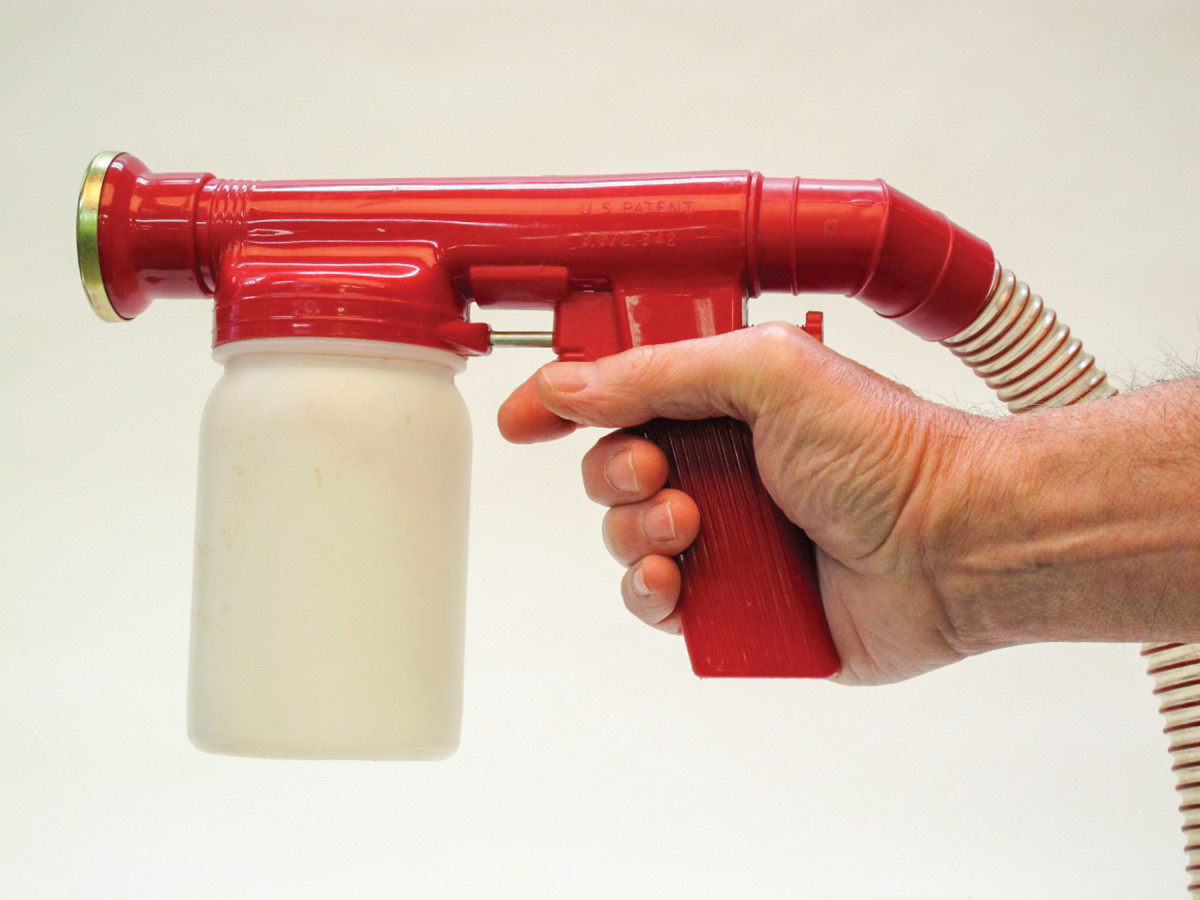
4. Early HVLP. Kirby vacuum cleaners came with an HVLP-gun attachment as far back as the 1930s. It was used to spray soapy water on carpets. The technology has been improved a lot since then.
Unlike the difficulties adjusting to water-based finishes and the disappearance of some very useful solvents, adjusting to HVLP spray guns is fairly easy.
Paint Strippers
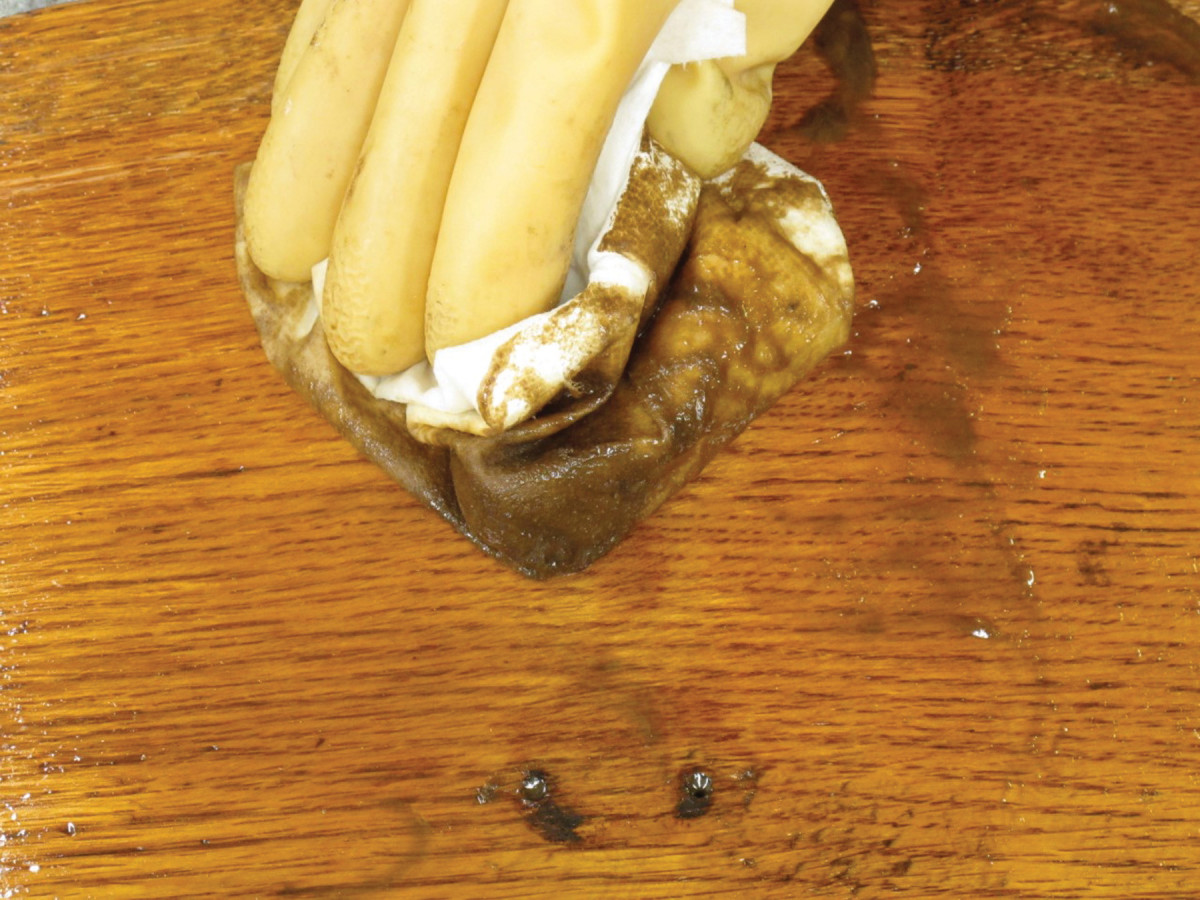
5. The paint or finish being stripped makes all the difference. Here I’m stripping lacquer with just lacquer thinner. It would have had little success on oil paint, polyurethane or a catalyzed finish. Manufacturers of stripping alternatives to methylene-chloride strippers, which have been removed from the consumer market, don’t tell you the coating being stripped in their marketing demonstrations.
I’ve written a number of times, both in this magazine and online, opposing the forced removal of methylene chloride from paint strippers. Unfortunately, this has happened. First, under pressure from consumer groups, big-box stores have stopped selling strippers containing methylene chloride, then the EPA issued a ruling prohibiting the sale of methylene-chloride strippers in the consumer market. Methylene chloride is by far the most effective solvent for removing paints and finishes.
So as manufacturers continue to supply more and more durable paints and finishes, their removal will be more and more difficult. This will result in increased damage to the wood, which may not be an issue with most modern trim and furniture, but it will reduce the value of old surfaces, especially antique furniture.
Consolidation
You may not have noticed, but there are many fewer companies supplying finishing products now than there used to be. This has happened partly because of larger companies buying smaller ones and partly because of companies simply going out of business. It appears that all paint and finish companies are being consolidated into just three: Sherwin-Williams, PPG and Akzo Nobel. The result is that we have much less choice than we used to have.
The most obvious example is the current dominance of Minwax, owned by Sherwin-Williams. This company was tiny back in the days when I was making and restoring furniture. At that time I used two brands of stain that don’t exist any more. One was an oil-based wiping stain that closely imitated the colors on antique furniture and the other was a “lacquer” stain that I added to lacquer to tweak the color to get a closer match.
It’s been hard to find replacements. Adjusting to change is difficult.
Here are some supplies and tools we find essential in our everyday work around the shop. We may receive a commission from sales referred by our links; however, we have carefully selected these products for their usefulness and quality.







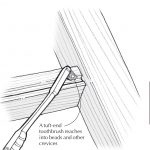
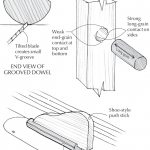
I didn’t know that denatured alcohol is on the endangered list. That sucks..
I use it for shellac, I also use it for dyeing, and many other uses. Cleaning/ degreasing as well.
There have been some EPA decisions I can support, but this is one I am totally confused by. Time to stock up on Mineral Spirits and Denatured alcohol..
I agree that removers don’t work today. I recently stripped varnish from a butler’s tray table that I built in the 80’s; it took 2 days! I tried 3 brands of stripper, and finally got one to work better by adding acetone, but the result was not great. I looked everywhere on line for methylene chloride and its nowhere to be found; I even called a friend at a specialty chemical formulator with no luck. Today I was asked by a neighbor to refinish an family antique and turned her down, explaining that it might take days to get the old finish off, and since I would be doing it at no charge, its not worth it.
I need to strip this solid walnut desk and refinish it, but it weighs about 400 pounds and getting it outside and back several times during the process is too much.
Like you, I must wonder just how much methyene chloride used by consumers contributes to air pollution. I was heavily involved in indoor air quality research in the 90’s and I cannot recall ever detecting MC in indoor air. Just another EPA solution in search of a problem.